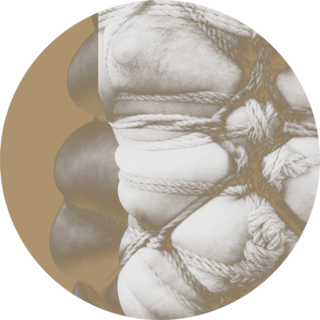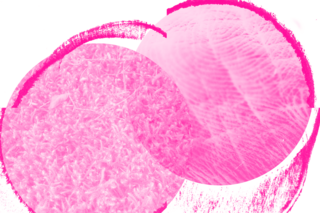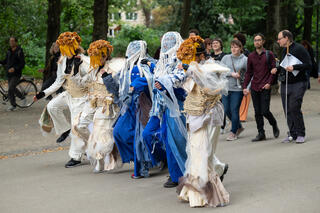COC 2/6
The Choreography of Care (2/6)
Liz Rosenfeld / Rodrigo Garcia Alves
What are we doing here and how are we doing it? Between utopian and nihilistic desires this life long encounter between us designs itself slowly and progressively towards the idea of Hospice in relation to our bodies, and commitment to each other.
Central questions in the creation of this hospice:
How do you picture the
last stage of your life?
What songs would you like
to play at your own funeral
(can be as many as you want)?
In the last moments of your life where
do you see yourself (surroundings,
people, objects, colors, taste, etc.)?
How can one be part of a community
without actively participating in it?
Continuous collection of questions as the foundation of our Hospice:
How can one be alone
while still being together?
How do ideas and notions
stay fresh and not get old?
How does one relinquish
control, while still feeling
in control of their own death?
How can Hospice Care support the
needs of queers, and de-institutionalize
and delinearize the narrative of death?
How can we honor the desire of
the individual and the desire of a
community at the same time?
Is dying only about the living?
Take part in this practice by adding your own questions, proposing
physical interactions and imagining your own hospice.
“Thank you for making an effort, even if these requests cannot be fulfilled.”

Zwoisy Mears-Clarke
“Continue walking
until you are stopped
by a small tree
no bigger than 4 centimeters
or the prickly bush
that hooks onto you
or the tree that you like
to sit underneath on Sundays
to drink your morning tea
or simply
by the plant being
you wish to get to know more deeply
right now.
This plant being that stops you in your tracks is your dance partner.
Like at the beginning of a court dance
bow and give your hand to the plant being’s surface
that reaches out towards you.
Tune into each other’s sense of rhythm.
Keep your hand on their surface
. . .
Like your dance partner
notice the temperature of the air
the humidity, the weather.
Let this noticed atmosphere
guide you
to a held-in memory
One of furnished remorse
or neutralized shame
or traditional fear
or some clutched story
that wishes to be rediscovered.
Move
with this memory.
Let it come to the forefront of your mind.
Give enough time
for it to make its way there.
It will guide the dance.
If the folding, bending, curving and twisting
of the spine in time with your shared rhythm
is the movement language of this dance,
let your spine tell your memory’s story.
Your rooted partner will receive it and offer a (moving) response in kind.
. . .
Memories
histories
can be terrifying to face.
Yet return to them we can.”
Excerpt from
To those living in Uckermark: Winter 2021
Moss texture image by Tracy Durnell, selected by Zwoisy Mears-Clarke.

Rodrigo Garcia Alves / Liz Rosenfeld
Rodrigo Garcia Alves is a Brazilian Choreographer, Performance Artist, and Curator based in Berlin. Since 2005 he does solos and collaborative works which explore ideas of creative translation, queer affects, and collage as a choreographic method.
Liz Rosenfeld is a Berlin based artist who works in film/video, live performance, social sculpture and experimental writing practices addressing the sustainability of emotional and political ecologies, cruising methodologies, as well as past and future histories in regard to the ways in which memory is queered.
For the last 3.5 years, over a series of residencies, Rodrigo and Liz have been working on their upcoming duet, Thank you for making an effort, even if these requests cannot be fulfilled, a performance work which engages with the topic of hospisce (i.e. end of life care/ politics of dying) through queer perspective and desire.
Zwoisy Mears-Clarke
Zwoisy Mears-Clarke is a choreographer of the encounter. Zwoisy uses the expanding potential of choreography to confront mechanisms of oppression that sabotage human interaction both systematically and interpersonally (including ableism, racism, black-&white-ness, neocolonialism, and sexism). Through dance, or rather collective movement, Zwoisy desires to suspend their everyday duress in temporary environments and open encounters that might otherwise seem unreachable, creating opportunities to move differently with one another. Zwoisy’s development as an artist has been guided largely by Mary Cochran, Anna Mülter, Joy Mariama Smith, Paula Chaves Bonilla, and various Black feminist community leaders. Currently, Zwoisy is based in Rösrath, Germany.




